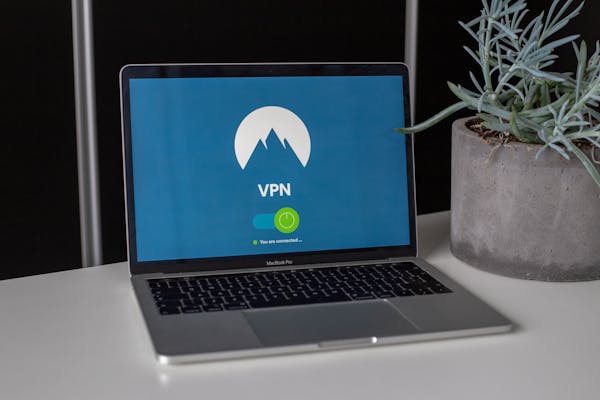Case Study
Case Study: Enhancing Online Security, Privacy, and Blockchain Integration
https://images.pexels.com/photos/301920/pexels-photo-301920.jpeg?auto=compress&cs=tinysrgb&w=600Background:
A financial institution is exploring ways to enhance online security and privacy for its customers while also incorporating blockchain technology into its operations. The institution deals with sensitive customer data, financial transactions, and wants to provide a secure and transparent platform for its clients.
Challenge:
The financial institution faces challenges in protecting customer data from cyber threats and ensuring privacy in online transactions. Additionally, they seek to leverage the benefits of blockchain technology to improve transparency and security but need to overcome potential implementation hurdles.
Solution:
The financial institution implements the following strategies to address the challenges and improve online security, privacy, and blockchain integration:
1. Multi-Factor Authentication (MFA) and Encryption:
To enhance online security, the institution adopts multi-factor authentication methods for customer logins. This involves requiring additional verification steps, such as a fingerprint scan or a one-time password, in addition to the traditional username and password. Furthermore, the institution strengthens data protection by implementing robust encryption techniques to safeguard sensitive customer information.
2. Secure Network Infrastructure:
To prevent unauthorized access and protect against cyber attacks, the financial institution invests in a secure network infrastructure. This includes firewalls, intrusion detection systems, and regular security audits to identify vulnerabilities and proactively address them.
https://images.pexels.com/photos/2064586/pexels-photo-2064586.jpeg?auto=compress&cs=tinysrgb&w=6003. Privacy Measures and Compliance:
The institution ensures customer privacy by implementing privacy measures aligned with regulatory requirements, such as the General Data Protection Regulation (GDPR) or other applicable data protection laws. They establish robust privacy policies, obtain customer consent for data collection and usage, and regularly review and update privacy practices.
4. Blockchain Integration for Transparency and Security:
To leverage the benefits of blockchain technology, the financial institution explores the implementation of distributed ledger systems. They adopt private or permissioned blockchains to maintain control over data access while enhancing transparency and security. Blockchain technology enables secure and tamper-proof recording of financial transactions, streamlining processes and reducing the risk of fraud.
5. Smart Contract Implementation:
The financial institution integrates smart contracts into their blockchain system. Smart contracts are self-executing contracts with predefined rules and conditions. By leveraging smart contracts, the institution automates and streamlines various operations, such as loan approvals, asset transfers, and compliance checks. This enhances security, reduces reliance on intermediaries, and improves transaction efficiency.
https://media.istockphoto.com/id/473264068/photo/case-study.jpg?s=612x612&w=0&k=20&c=aeXb_qjeE6o74d3IlmavPCx9yGLmKxrpeWKCxcGCqdM=Results:
By implementing these strategies, the financial institution achieves the following outcomes:
1. Strengthened Online Security: Multi-factor authentication, encryption, and a secure network infrastructure significantly improve protection against cyber threats and unauthorized access.
2. Enhanced Privacy: Privacy measures and compliance with data protection laws ensure customer data privacy, instilling trust and confidence among clients.
3. Improved Transparency and Security with Blockchain: Integration of blockchain technology provides a transparent and secure platform for financial transactions, reducing the risk of fraud and enhancing efficiency.
4. Streamlined Operations with Smart Contracts: Smart contract implementation automates processes, reducing reliance on intermediaries, and increasing operational efficiency.
Conclusion:
This case study demonstrates how a financial institution can enhance online security, privacy, and blockchain integration. By adopting multi-factor authentication, robust encryption, a secure network infrastructure, and complying with privacy regulations, the institution ensures data protection. Additionally, by leveraging blockchain technology and smart contracts, they achieve improved transparency, security, and operational efficiency. These measures contribute to building trust among customers and strengthening the institution's position in the market.
References:
1.Satyabrata,A.,Mangal S.&Hye-in,L.(2019).A Review on Benefits of Iot Blockchain based Supply chain Management Implementations across Different Sectors with Case Study. Departament of Computer Engineering. South Korea.
2.Ilsun,U.,Soonhyun,K.,Gaurov,C.,Vishal,S.&Jung,T.S.(2018) An Enhance LoRaWAN Security Protocal for Privacy Preservation in IoT a Case Study on a Smart Factory-Enabled Parking System. Departament of information Security Engineering. Korea.
3.Copyright pictures: https://www.pexels.com/ , https://www.istockphoto.com/.




Comments
Post a Comment